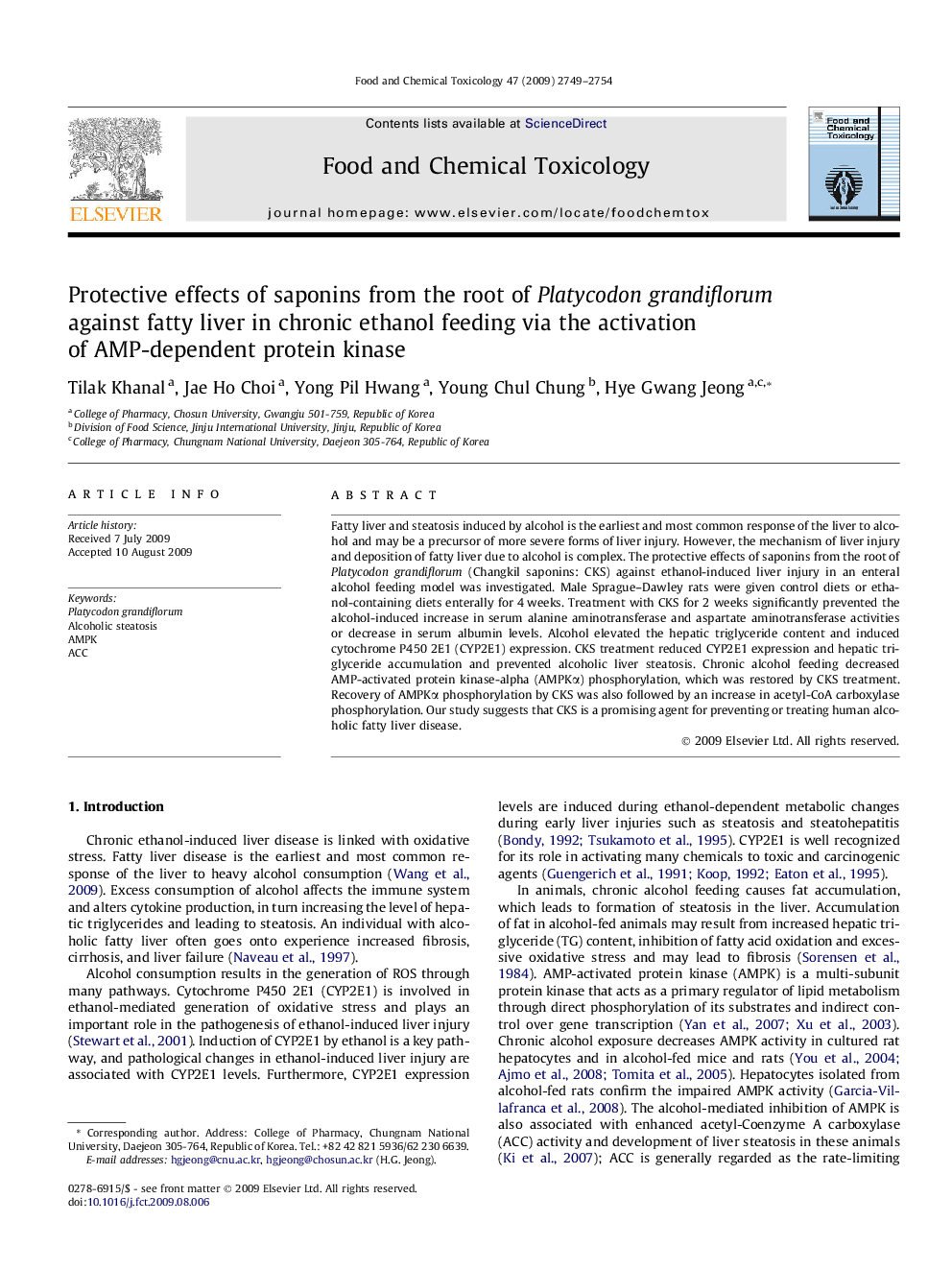| Article ID | Journal | Published Year | Pages | File Type |
|---|---|---|---|---|
| 2586392 | Food and Chemical Toxicology | 2009 | 6 Pages |
Fatty liver and steatosis induced by alcohol is the earliest and most common response of the liver to alcohol and may be a precursor of more severe forms of liver injury. However, the mechanism of liver injury and deposition of fatty liver due to alcohol is complex. The protective effects of saponins from the root of Platycodon grandiflorum (Changkil saponins: CKS) against ethanol-induced liver injury in an enteral alcohol feeding model was investigated. Male Sprague–Dawley rats were given control diets or ethanol-containing diets enterally for 4 weeks. Treatment with CKS for 2 weeks significantly prevented the alcohol-induced increase in serum alanine aminotransferase and aspartate aminotransferase activities or decrease in serum albumin levels. Alcohol elevated the hepatic triglyceride content and induced cytochrome P450 2E1 (CYP2E1) expression. CKS treatment reduced CYP2E1 expression and hepatic triglyceride accumulation and prevented alcoholic liver steatosis. Chronic alcohol feeding decreased AMP-activated protein kinase-alpha (AMPKα) phosphorylation, which was restored by CKS treatment. Recovery of AMPKα phosphorylation by CKS was also followed by an increase in acetyl-CoA carboxylase phosphorylation. Our study suggests that CKS is a promising agent for preventing or treating human alcoholic fatty liver disease.
